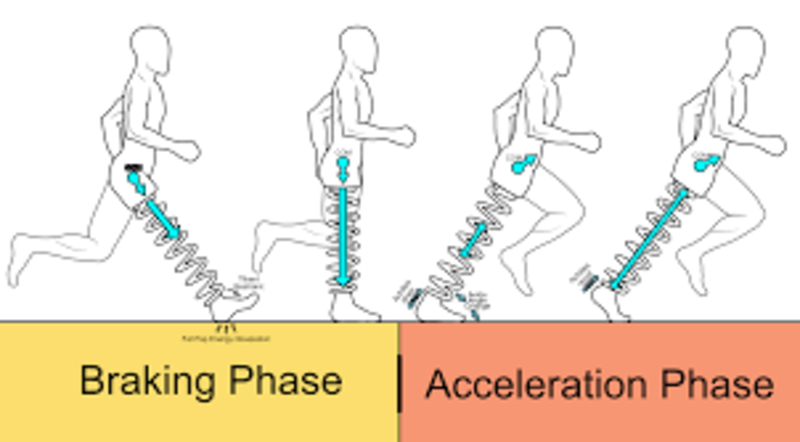Have you ever experienced discomfort or pain during running? If the answer is yes, then it could be beneficial to reevaluate your current running form. This article will delve into effective methods for enhancing your overall running experience. These include concentrating on improving form, rectifying technique errors, and ultimately attaining efficient mechanics in your stride.

Running Form Improvement
All levels of runners must understand the fundamentals of running form. Even if you are a seasoned marathoner or a casual jogger, adopting proper running form can prevent injuries and enhance performance.
Components of Good Running Form
A solid foundation grounded in optimal form is the key to efficient running. Qe must break down this integral concept. This involves cultivating a running style that enhances performance and minimizes injury risks. Let's explore its key components.
1. Posture:
Proper posture serves as the foundation for optimal running form. Your spine must naturally align to promote a straight yet relaxed stance. Vigilantly avoid slouching or leaning excessively forward.
These deviations in postural alignment can not only cause discomfort but also impede overall performance. Your core muscles must engage to provide stability. This action facilitates a more controlled and efficient stride.
2. Arm Movement:
Do not underestimate the role your arms play in running. They function as a counterbalance, a crucial aspect for maintaining balance and facilitating a smoother gait. Ensure that you keep them relaxed.
Maintain an angle of 90 degrees at the elbow, allowing for natural synchronization with each stride. Excessive side-to-side movements must be avoided, as they not only waste energy but also introduce unnecessary stress to your upper body.
3. Foot Placement:
Significantly influencing your running form. The way and location in which your feet touch the ground. Aiming for a midfoot strike, this strategy distributes impact forces more evenly throughout your lower limbs, which is advisable.
However, one must avoid overstriding, the action where the foot lands excessively far ahead of the body position. This behavior can escalate impacts and potentially result in injuries. Hence its avoidance is crucial. Your running pattern becomes more efficient and biomechanically sound when you take short, quick strides. Ensure that your feet consistently land beneath your hips.

To foster lasting improvements, you must actively understand and integrate these elements into your running routine. Posture, arm movement, and foot placement. By consistently focusing on these aspects, not only will you optimize performance but also enhance the enjoyment of your run while reducing injuries. Make a point to incorporate these principles into every training session. This will result in running with heightened ease and efficiency.
Correcting Running Technique
Fundamental to runners striving for optimal performance and injury prevention is the identification and rectification of running technique issues. We will deconstruct common errors in running form, offering practical insights into their effective resolution.
Overstriding and Its Impact
Many runners frequently encounter the stumbling block of overstriding, which can lead to discomfort and heightened susceptibility to injuries. Overstriding manifests when they place their leading foot excessively ahead of their body's center of mass.
Thus, a shorter stride length is crucial for countering this issue. Incorporating this adjustment minimizes joint impact and reduces strain risk. If you integrate cadence drills into your training, they can establish a faster turnover rate. This mitigates the overstriding tendency.
Uneven Arm Swing
Runners, in their quest for stride stability and efficiency, must prioritize a harmonious arm swing. This balance can be disrupted by an uneven arm swing, a compromise to your overall running mechanics.
To rectify this issue, emphasize symmetry during practice sessions with a specific focus on arm drills. Arm circles and pendulum swings, simple exercises, synchronize your arm movements. Your overall running experience will ultimately enhance as you consistently practice to contribute to a more coordinated and efficient arm swing.
Engage Your Core
The cornerstone of a runner's stability and posture is a robust core. Strengthening this core fosters superior balance, and reinforces the body's capacity to sustain an upright position during runs, thus enhancing performance. Incorporate routine with exercises such as planks.
Russian twists and leg raises for optimal results in strengthening your core. Engaging the muscles around your abdomen, lower back, and pelvis through these exercises provides a stable foundation for your entire body; furthermore, as you improve core strength, an enhanced ability to sustain proper running form over various terrains is developed.

Recognizing and rectifying these aspects of your running technique paves the way for a smoother, more efficient, and injury-resistant running experience. Implementing consistent corrections and awareness of your body's movements in tandem significantly boosts overall running prowess.
Efficient Running Mechanics
When it comes to running, the key is efficiency. Therefore, you should actively explore strategies. Strategies that not only enhance your mechanics but also render your runs more enjoyable and advantageous.
- Proper Breathing Techniques
Unveil the secrets of proper breathing techniques that can enhance not only your running efficiency but also, your overall well-being. During every run, it is of paramount importance to focus on effective respiration.
- Foot Strike Patterns
Various foot strike patterns are adopted by different runners. One must comprehend the advantages and disadvantages associated with each, ultimately learning to identify and adjust their foot strike for optimal running mechanics.
- Regular Strength Training
Incorporate strength training exercises into your routine. This will not only build muscle but also enhance overall body mechanics. By strengthening key muscle groups; you can significantly contribute to superior running form and importantly, mitigate the risk of injuries.
Conclusion
In short, the refinement of your running form remains an ongoing process. However, it holds the potential to profoundly influence and elevate your overall running experience. By directing attention towards improvements in form, rectifying technique errors, and attaining efficient mechanics during runs, you can significantly reduce injury risks while amplifying the benefits derived from each session. Integrate these suggestions into your routine for a healthier and more enjoyable running experience.




